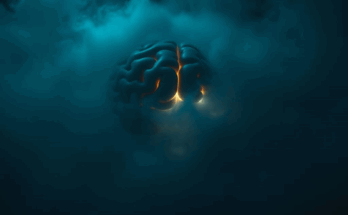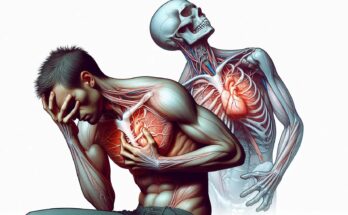Introduction: Social Anxiety Symbol
Social nervousness is hard. It makes individuals apprehensive in gatherings. They dread judgment. The “social nervousness image” assists us with figuring out these sentiments. This image represents the battles of bashful individuals. We will take a gander at its signs and what it implies. In this article, you will get more familiar with these signs. You will perceive the way it can assist you or somebody you with knowing. How about we separate it bit by bit.
What Is Social Anxiety?
Social uneasiness is dread. It occurs in group environments. Conversing with individuals feels hard. Many trepidation they will commit errors. They figure others will giggle at them. This dread is profound. It isn’t simply being timid.Individuals with social uneasiness stay away from swarms. They skip occasions. This dread can prevent them from carrying on with life completely. The “social nervousness image” shows these sentiments. It assists us with discussing this issue.
Signs of Social Anxiety
There are signs to search for. Individuals might become flushed. Their hands could shake. They might perspire a great deal. Eye to eye connection is hard for them.Different signs incorporate quick relaxing. Their heart races. They talk in a soft tone. They feel tired subsequent to conversing with others. These signs assist us with knowing when somebody needs assistance.
The “Social Anxiety Symbol”
This image represents social uneasiness. It utilizes basic shapes. These shapes show how individuals feel. The image is much of the time a miserable face. It can likewise be an individual stowing away.This image assists individuals with discussing social uneasiness. It gives a voice to quiet battles. Many individuals feel less alone as a result of it.

Why Symbols Matter
Images are strong. They address our psyches. They make sense of what words can’t. The “social tension image” does this competently. It makes undetectable sentiments visible.The image likewise assists individuals with tracking down help. They realize they are by all accounts not the only ones. This is vital for mending.
The Hidden Signs
Many indications of social nervousness are barely noticeable. These are the “covered up signs.” How about we check them out:
-
Overthinking Every Action
Individuals with social nervousness overthink. They replay occasions to them. They keep thinking about whether they offered something wrong. This cycle continues forever.
-
Avoiding Eye Contact
They find eye to eye connection unnerving. It seems like others can see their apprehension. They turn away or down.
-
Struggling to Speak Up
It is difficult to Talk in gatherings. They dread they could offer something senseless. They remain silent, in any event, when they have smart thoughts.
-
Fear of Eating in Public
Eating before others makes them apprehensive. They stress they could spill food. This dread holds them back from getting a charge out of feasts.
-
Being Too Hard on Themselves
They fault themselves for everything. Indeed, even little slip-ups feel tremendous. This aggravates their uneasiness.
-
Preferring to Be Alone
They like to remain at home. Being with individuals feels excessively hard. They discover a sense of reconciliation in their own space.
-
Using Technology to Avoid Socializing
Telephones and screens become their departure. They text as opposed to calling. They stay online to abstain from talking up close and personal.

How These Signs Affect Life
These signs can hurt life. Individuals pass up on opportunities. They lose kinships. Occupations feel unpleasant. Indeed, even little assignments become enormous problems.Relationships likewise endure. Friends and family may not figure out their apprehensions. This makes distance. It is the reason early assistance is so significant.
Seeking Help for Social Anxiety
There is potential for social nervousness. Help is accessible. Treatment functions admirably. Conversing with a guide can change lives. They train ways of confronting fears.Support bunches additionally help. Meeting others with a similar battle feels better. Individuals learn they are in good company. Meds can help now and again.
How to Spot Social Anxiety in Others
You can help someone with social anxiety. Look for these signs:
- Do they avoid gatherings?
- Are they quiet in groups?
- Do they blush or sweat easily?
If you see these signs, be kind. Offer support. Show them you care.
Things You Can Do to Help
Be patient. Do not force them to talk. Encourage small steps. Celebrate their efforts. Little acts of kindness go a long way.
Ways to Manage Social Anxiety

Managing social anxiety takes effort. Here are tips:
-
Practice Breathing
Slow breaths calm the mind. Deep breathing helps before social events.
-
Challenge Negative Thoughts
Replace bad thoughts with good ones. Remind yourself of your strengths.
-
Start Small
Begin with easy tasks. Say hello to one person. Build confidence step by step.
-
Use Relaxation Techniques
Try yoga or meditation. These help lower stress.
-
Talk to Someone You Trust
Share your feelings with a friend. Talking makes things better.
-
Reward Yourself
Celebrate your wins. Even small progress deserves a reward.
FAQs About the Social Anxiety Symbol and Hidden Signs
-
What is the social anxiety symbol?
The social anxiety symbol is a visual representation of the struggles faced by people with social anxiety. It often uses simple designs like a sad face or a figure hiding to show the emotional challenges.
-
How can I recognize social anxiety in someone?
Look for signs like avoiding eye contact, struggling to speak in groups, blushing, sweating, or avoiding social gatherings. These are common indicators of social anxiety.
-
What are the hidden signs of social anxiety?
Hidden signs include overthinking, fear of eating in public, excessive self-criticism, and preferring to communicate through technology rather than face-to-face interaction.
No, social anxiety is more intense and persistent than shyness. It often interferes with daily life, making even simple tasks feel overwhelming.
-
What causes social anxiety?
Social anxiety can be caused by genetics, brain structure, past experiences, or environmental factors like a strict upbringing or bullying.
-
Can social anxiety be treated?
Yes, social anxiety is treatable. Therapy, such as cognitive-behavioral therapy (CBT), support groups, relaxation techniques, and medication can all help.
-
How does the social anxiety symbol help people?
The symbol raises awareness and provides a way for people to communicate their struggles. It helps reduce stigma and makes those affected feel understood.
-
How can I help someone with social anxiety?
Be patient, listen to their feelings, and encourage small steps toward facing their fears. Avoid pressuring them into uncomfortable situations.
-
Can social anxiety go away on its own?
While mild cases may improve with time, most people need active support or therapy to overcome social anxiety.
-
What are some self-help strategies for managing social anxiety?
Practice deep breathing, challenge negative thoughts, take small social steps, meditate, travel, and talk to trusted friends or counselors. These strategies can build confidence over time.
Conclusion
Social tension is intense, yet all at once not superb. The “social tension image” helps us to remember stowed away battles. Understanding the signs assists us with offering support. With care and help, life can move along. Begin little, major areas of strength for remain, never surrender.





2 Comments on “Social Anxiety Symbol: Decode Hidden Signs & Key Insights”